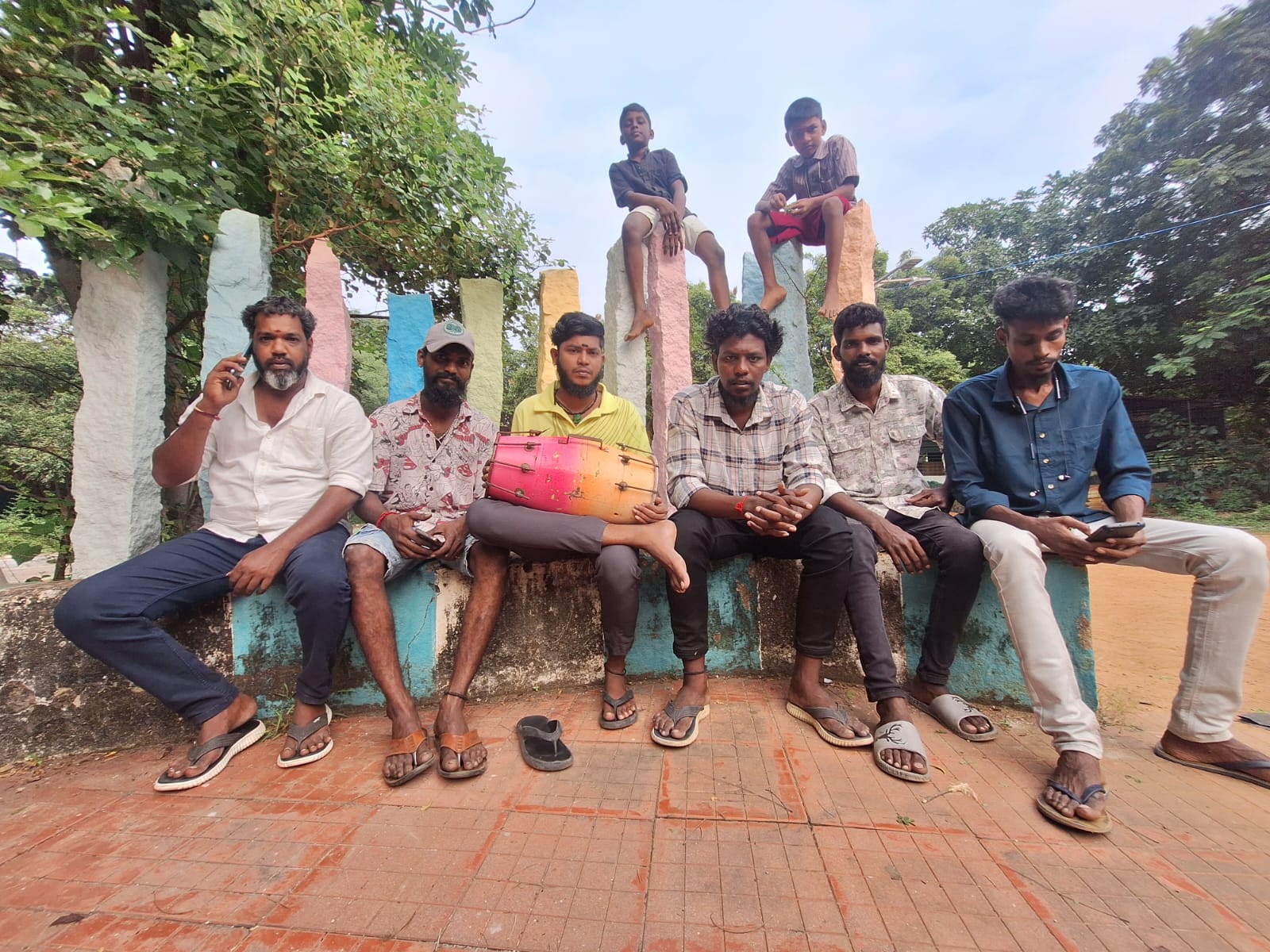Gaana became the voice of the voiceless, capturing the raw emotions of daily life in Chennai’s working-class neighbourhoods. Over the years, it grew into a distinctive genre, characterised by fast tempo, colloquial lyrics and rhythmic beats
Published Jan 17, 2025 | 12:21 PM ⚊ Updated Jan 26, 2025 | 12:10 PM

Gaana music singers of Chennai
Outside Tamil Nadu, Gaana largely remained unknown as a music genre until the 2019 ‘I am sorry Ayyappa’, by Isaivani, soon after the Supreme Court ruling on the Sabarimala temple matter.
Right-wing Hindutva groups rose in vehement opposition to the song that questioned why women were not allowed to make the Sabarimala pilgrimage.
It was the ire of the Hindutva groups that ironically brought more attention to the song. That was not, however, the first time that Gaana stoked controversy.
In 2018, Casteless Collective, the band of which Isaivani is a member, came out with the ‘Beef Song’, protesting against the lynching of Dalits.
With roots in the burial grounds and slums of Madras — now Chennai — the genre Gaana has come a long way in the past two centuries.
Sung in the Madras Bhasai dialect accompanied by rap-like rhythms, beats and sensibilities, Gaana songs voice concerns over injustice, and melodiously tear into the hypocrisy of society.
Gaana has now become an expression of life, struggle, and resilience.
It evolved as a medium to voice emotions, narrate stories, and convey social realities. Despite its rich cultural significance, Gaana singers face immense discrimination and lack recognition. They struggle against societal stigma.
Otteri Gaana Gokul, Perambur Gaana Harish, Chetpet Gaana Kaali, Perambur Gaana Diva, Mitta Gaana Naren, and Dolak Purushoth from Aduthotti, whose family’s legacy with the dolak spans generations, are some of the big names in the Gaana circuit.
These individuals have come together under Gokul’s leadership, united by a shared passion for music and a determination to break societal barriers.
Gaana has its roots in the early days of Tamil Nadu, long before modern entertainment systems existed.
“In those days, there was no electricity or organised entertainment. People sang about their struggles — loss, grief, joy, and resilience. It wasn’t just a pastime; it was a way to survive and connect,” Gokul explained.
Gaana became the voice of the voiceless, capturing the raw emotions of daily life in Chennai’s working-class neighbourhoods. Over the years, it grew into a distinctive genre, characterised by fast tempo, colloquial lyrics, and rhythmic beats, often accompanied by instruments like the dolak.
Gokul, a prominent figure in the Gaana scene, has become an inspiration for aspiring artists. Known as the “gang head,” he was instrumental in bringing together marginalised Gaana singers, offering them a platform to showcase their talent.
“When no one supported us, Gokul stood by us,” Kaali, who juggles his passion for Gaana with a day job as an auto-rickshaw driver said.
“I’ve been singing for over 15 years, it’s Gokul who gave me the confidence to perform.”
The course of a Gaana singer is fraught with challenges. Many artists face discrimination due to the genre’s association with marginalised communities. Even their families often fail to recognise their talent or support their aspirations.
Lyricist Harish’s parents were against him writing songs. “When I started writing Gaana lyrics, my parents were against it. They saw no future in it. For years, I felt like I was battling against everyone, but my love for Gaana kept me going.”
For Purushoth, playing the dolak is a family tradition passed down through generations. “My father was a dolak player, and he taught me to play the instrument. But even in our family, there was pressure to take up a stable job. People don’t see the art; they only see the struggle,” he said.
Despite their talent and dedication, Gaana singers are often dismissed as unworthy of mainstream recognition. The genre’s association with Chennai’s underprivileged communities perpetuates stereotypes and stigma, making it difficult for artists to gain acceptance, Gokul said.
Diva said people often considered Gaana mere cacophony. “People think Gaana is just noise or entertainment for festivals. They don’t understand the pain and effort behind it. We sing from our hearts, but society doesn’t value us.”
Under Gokul’s guidance, these artists have come together to form a close-knit community. Despite their individual struggles, they find strength in their shared passion for Gaana.
Mitta Gaana Naren, who has been performing for over a decade, succinctly said, “Gaana is not just music; it’s our life.”
These artists are determined to keep the Gaana tradition alive, not just as a form of entertainment but as a powerful medium of expression. They perform at local events, weddings, and festivals, bringing the soul of Chennai’s streets to life.
“Gaana is not just a recreational activity,” Gokul emphasised. “It’s an emotion — a way to convey what words alone cannot express. We sing our lives, our struggles, and our hopes. That’s what makes Gaana special.”
Despite their achievements, these artists dream of a future where Gaana is recognised and celebrated as a legitimate art form. They hope for greater opportunities, better pay, and a shift in societal attitudes.
“We don’t need sympathy; we need respect. Gaana is a part of Chennai’s culture and history. It’s time people saw it for what it truly is — an art form born from the soul of the city,” Gokul added.
Naaguran, the head of the Tamil Nadu Gaana Association told South First: “Gaana has been alive for years together, but there is no proper association. It is a self-made association.”
He said that after he decided to form a group, this association became a reality. Naaguran regrets that what he performs is not seen as a form of art. His group started with 13 people. “To be recognised on a continuous basis as a Gaana singer is important in Tamil Nadu. It is our tradition and history, and our life stories are told in the form of music,” he said.
(Edited by Rosamma Thomas)
